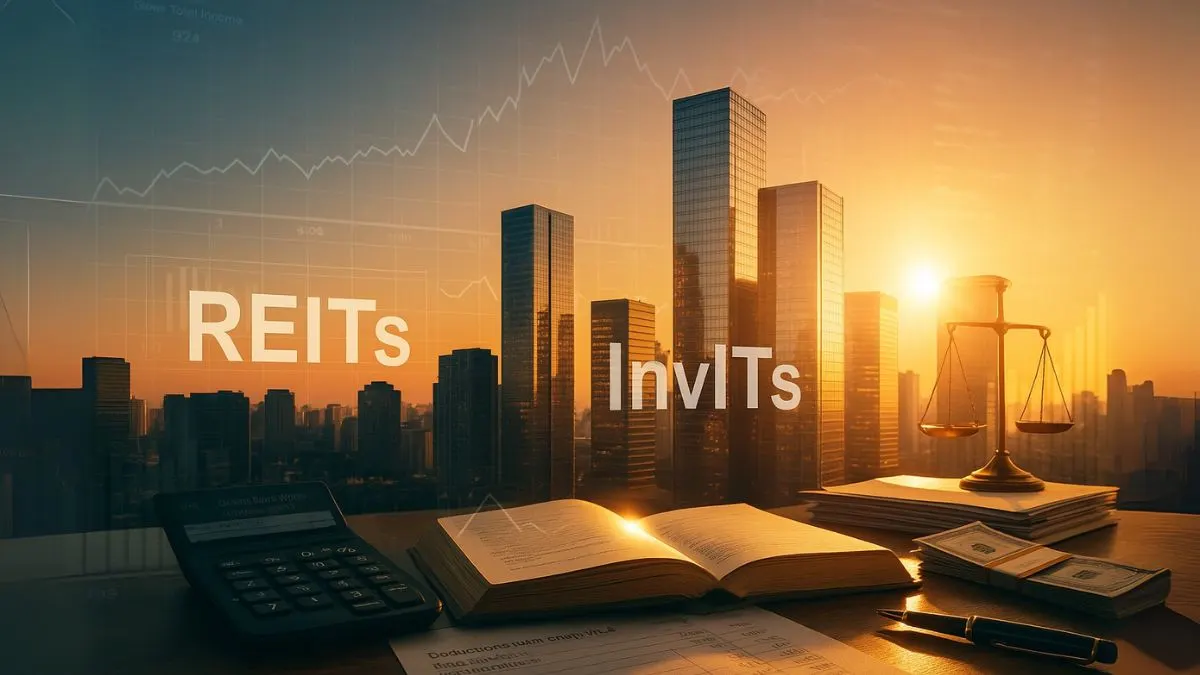
The Indian tax system has evolved to accommodate new investment structures like Business Trusts, which play a crucial role in channeling funds into the infrastructure and real estate sectors. To ensure clarity and uniformity in taxation, the government introduced Section 115UA of the Income Tax Act. This section lays down a specific set of rules for how the income of a Business Trust is taxed, aiming to establish a framework for the taxation of pass-through income while ensuring transparency for investors.
Business Trusts, such as Real Estate Investment Trusts (REITs) and Infrastructure Investment Trusts (InvITs), pool capital from investors & invest in income-generating assets. The taxability of the income earned by a Business Trust is unique, as it involves both trust-level taxation and investor-level taxation.
Understanding Section 115UA – The Objective
The primary objective of Section 115UA is to bring consistency in the taxation of Business Trusts. Under this section, the total income of a business trust shall be charged to tax at the maximum marginal rate in certain cases, while some categories of income are taxed directly in the hands of the unit holders."
This "pass-through" mechanism means that certain incomes are exempt from tax at the trust level but are taxed in the hands of investors, thereby avoiding double taxation. It helps maintain fairness & ensures that Business Trusts remain attractive to investors.
What is a Business Trust?
A Business Trust is an investment vehicle registered under SEBI regulations that holds and manages income-generating assets. It can be:
- A Real Estate Investment Trust (REIT) – focused on commercial real estate.
- An Infrastructure Investment Trust (InvIT) – focused on infrastructure assets like roads, power plants, and transmission lines.
These trusts receive rental income, interest, dividends, and capital gains from their underlying assets. The taxability of the income earned by Business Trust is governed mainly by Section 115UA.
How Taxation Works Under Section 115UA
Under Section 115UA, the taxation system is divided into two levels:
- Trust Level Taxation – The total income of a business trust is taxed at the maximum marginal rate for certain categories of income, particularly those not eligible for pass-through treatment.
- Investor Level Taxation – Pass-through income is exempt at the trust level but taxable in the hands of the unit holders, depending on the nature of the income (dividend, interest, rental income, or capital gains).
Also Read: How to Save Tax on Long-Term Capital Gains from House Property
Pass-Through Income and its Treatment
Pass-through income refers to income that is not taxed at the trust level but passed on to investors, who then pay tax according to their applicable slab rates or special rates. Examples include:
- Interest income from Special Purpose Vehicles (SPVs) – taxed at 5% for non-resident investors & at applicable rates for resident investors.
- Dividend income – exempt in the hands of the trust if Dividend Distribution Tax (DDT) is already paid by the SPV."
- Rental income – taxed in the hands of investors under the "Income from House Property" head.
This system ensures that the same income is taxed only once, thereby eliminating cascading taxation effects.
Maximum Marginal Rate – When it Applies
Not all income qualifies for pass-through status. For example, capital gains earned by the Business Trust on the sale of assets at the trust level are taxed within the trust itself. In such cases, the total income of a business trust shall be charged to tax at the maximum marginal rate.
The term "maximum marginal rate" refers to the highest rate of income tax (including surcharge and cess) applicable to an individual or association of persons (AOPs).
Example – How Section 115UA Works in Practice
Imagine a REIT earns ₹50 crore in a year. Out of this:
- ₹30 crore is interest from SPVs (pass-through income).
- ₹10 crore is rental income (taxable in investors’ hands).
- ₹10 crore is capital gains from selling an asset (taxable at the trust level).
The ₹10 crore capital gains will be taxed at the maximum marginal rate at the trust level. The ₹40 crore pass-through income will be distributed to investors, who will pay taxes individually based on their tax category.
Importance for Investors
For investors, Section 115UA provides tax clarity, making it easier to evaluate returns. Since certain incomes are taxed only once, post-tax yields can be higher compared to other investment structures.
For example, non-resident investors benefit from concessional tax rates on certain pass-through incomes, making Indian Business Trusts a globally attractive option.
Also Read: Capital Gains, Property Sales & Real Value Rules
Compliance and Reporting under Section 115UA
Business Trusts must comply with strict reporting requirements:
- File annual returns declaring total income and its bifurcation into taxable & pass-through components.
- Issue statements to unit holders specifying the nature of income distributed and the applicable tax rates."
This ensures that investors can correctly report income in their tax returns without disputes or errors.
Why Section 115UA Matters in the Bigger Picture
By providing a clear taxation framework for Business Trusts, Section 115UA encourages investments in infrastructure & real estate, sectors crucial for India’s economic growth. It boosts investor confidence by ensuring tax transparency and preventing multiple layers of taxation.
As India seeks more private and foreign investments in infrastructure, clarity in the taxability of the income earned by Business Trust becomes essential, and Section 115UA plays a pivotal role here.
Thinking of investing in a Business Trust or unsure how pass-through taxation works? Our experts at Callmyca.com can guide you in maximizing returns while staying 100% tax compliant.











